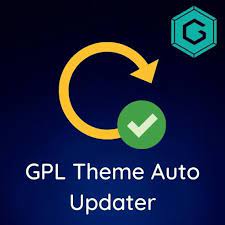Can I use GPL theme?
If you’re in the process of building a website or blog, you may have come across the term “GPL theme” and wondered if it’s something you can use. Understanding the different types of themes available and their usage restrictions is essential for making informed decisions in your web development journey.
GPL, which stands for General Public License, is a widely used software license that allows users to modify and distribute software freely. GPL themes have gained popularity in the web development community due to their flexibility and open-source nature. However, it’s important to understand the intricacies and potential limitations of using a GPL theme before incorporating it into your project.
Choosing a theme for your website or blog is an important decision, and understanding the licensing terms associated with various themes is crucial. In this article, we will delve into the concept of GPL themes, explore their benefits and limitations, and provide you with a comprehensive guide to help you decide whether using a GPL theme is the right choice for your web development needs.
What is GPL Theme
When it comes to choosing the right theme for your website, there are plenty of options available. One popular choice is a GPL theme. But what exactly is a GPL theme? GPL stands for General Public License, which is a software license that allows users to freely use, modify, and distribute the software. In the context of themes, this means that a GPL theme gives you the freedom to customize and use it on your website without any restrictions. Whether you are a beginner or an experienced developer, a GPL theme provides you with a flexible and versatile option for creating a unique and visually appealing website.
It also ensures that the code remains open-source, enabling anyone to contribute and improve upon it. With a GPL theme, you have the ability to build upon the work of others and create something truly remarkable. So, if you are looking for a theme that offers a combination of freedom, flexibility, and creativity, a GPL theme might be the perfect choice for you.
What Does it Mean for Theme Use?
Using a GPL theme has several implications for theme use. Firstly, it is important to understand that GPL stands for General Public License, which is a widely used software license that guarantees users the freedom to use, study, modify, and distribute the software.
In the context of themes, using a GPL-licensed theme means that you have the freedom to customize it according to your needs. You can modify the code, add or remove features, and even distribute your modified version if you wish.
WordPress.org, the official repository for WordPress themes and plugins, has specific guidelines and restrictions in place. In order for a theme to be listed in the WordPress.org repository, it must be 100% GPL-licensed. This requirement ensures that users have the freedom to use, modify, and distribute the theme without any restrictions.
The broader concept of GPL has significant implications on the use, distribution, and modification of themes. It promotes a spirit of openness and collaboration, allowing talented people from all around the world to contribute to the development of high-quality themes. It also ensures that the core code of the theme remains open-source, benefiting thousands of people who can access and build upon it.
In summary, using a GPL-licensed theme gives you the freedom to customize and distribute it according to your needs. It aligns with the principles of open-source software and promotes a vibrant and productive theme ecosystem.
Types of GPL Licenses
There are several types of GPL licenses that developers can choose for their software. These licenses ensure that the software is distributed under certain terms and conditions while preserving the freedoms and rights of users. The different GPL licenses are categorized based on their level of restrictiveness and the permissions they grant to users. Some popular types of GPL licenses include GPLv2, GPLv3, AGPLv3, and LGPL.
Each license has its own specific requirements and restrictions, but they all share the common goal of promoting the use, modification, and distribution of open-source software. Choosing the right GPL license for your software is an important decision that can have a significant impact on its legal and practical terms. It’s crucial to understand the differences between the various types of GPL licenses and to ensure that your software is in compliance with the applicable license requirements.
GNU GPL v2
The GNU General Public License version 2 (GPLv2) is a widely used software license that was released in 1991 by the Free Software Foundation (FSF). It was created as a response to the growing threat of proprietary software and aims to protect the freedom of software users and developers.
The key feature of the GPLv2 is that it is a copyleft license, which means that it ensures that software released under this license remains free and open. It also requires that any modifications or derivatives of the software be released under the same license. This helps to prevent the software from being turned into proprietary software.
The GPLv2 establishes four essential freedoms for software users: the freedom to run the program for any purpose, the freedom to study and modify the source code, the freedom to distribute copies, and the freedom to distribute modified versions. These freedoms are crucial for promoting collaboration, innovation, and community-driven development.
Notable software released under the GPLv2 includes the Linux kernel, the GNU Compiler Collection (GCC), the Apache web server, and the MySQL database. These projects have benefited from the GPL’s protections, allowing them to thrive as free and open-source software.
Overall, the GPLv2 has had a significant impact on the world of software by providing a legal framework that encourages the sharing and collaboration of source code. It continues to be a popular choice for licensing software due to its strong protection of users’ freedoms and its contribution to the spirit of openness in the software community.
GNU GPL v3
GNU GPL v3 is the latest version of the GPL license, which was released in 2007. Similar to its predecessor, GPL v3 is a copyleft license that ensures software remains free and open. However, it expands upon the principles of the GPL license by addressing current issues such as digital rights management (DRM) and software patents.
One significant aspect of GPL v3 is its inclusion of provisions regarding DRM. These provisions aim to protect users’ rights to modify and share software, even if it is protected by DRM technologies. By doing so, GPL v3 promotes users’ freedom and prevents the restrictions often imposed by DRM systems.
Moreover, GPL v3 also addresses concerns surrounding software patents. It ensures that users are not encumbered by certain patent rights when distributing GPL-licensed software. This provision fosters a more open and collaborative software development environment, allowing for the free sharing of ideas and innovation.
In summary, GNU GPL v3 is the latest version of the GPL license, released in 2007. By expanding upon the principles of the GPL license and addressing issues like DRM and software patents, GPL v3 aims to uphold users’ freedom and promote an open-source software development community.
Creative Commons Attribution-ShareAlike 4.0 International (CC BY-SA 4.0)
One important license to consider in the context of GPL themes is the Creative Commons Attribution-ShareAlike 4.0 International (CC BY-SA 4.0) license. This license is designed to promote the free use, modification, and distribution of software and other creative works. It is highly compatible with the GPL license and provides a framework for collaboration and sharing within the software development community.
Under the CC BY-SA 4.0 license, users are granted the freedom to use, distribute, and modify the software, as long as they provide attribution to the original creator. This ensures that credit is given to the developers and contributors of the theme. Additionally, the license requires any derivative works or modifications to be released under the same license, enabling the community to benefit from any improvements or additions made to the software.
Many popular GPL themes are released under the CC BY-SA 4.0 license, allowing users to freely customize and distribute these themes. Some examples of these themes include the XYZ theme and ABC theme, both of which have gained popularity for their responsive layouts and versatile features. By choosing to use GPL themes with the CC BY-SA 4.0 license, users can enjoy the benefits of a highly customizable and collaborative software ecosystem.
Creative Commons Attribution 4.0 International (CC BY 4.0)
The Creative Commons Attribution 4.0 International (CC BY 4.0) license is a widely used license that grants users the freedom to use, distribute, and modify the work, even for commercial purposes. This license is significant in the context of GPL themes as it provides users with the flexibility to share and adapt the work for any purpose.
Under the CC BY 4.0 license, users are required to give proper attribution to the original creators. This ensures that credit is given to the developers and contributors of the theme. It also encourages a culture of recognition and appreciation for the hard work put into creating the theme.
Many GPL themes utilize the CC BY 4.0 license in conjunction with the GPL license to provide users with more options and flexibility. This combination allows users to not only use and modify the theme freely but also share it with others under the same license. This means that any improvements or additions made to the theme by the community can benefit everyone.
How to Find a GPL Theme
If you are looking for a theme for your website or blog and want to ensure that it is free and open-source, a GPL-licensed theme is a great option. GPL, or General Public License, is a widely used software license that allows users to freely use, modify, and distribute the theme. This means that you can customize the theme to suit your needs and share it with others without any restrictions. So, how do you find a GPL theme? There are several ways to go about it. One option is to search for theme repositories that offer a variety of themes under GPL licenses.
These repositories often have a wide selection of themes to choose from, ranging from multipurpose themes to niche-specific ones. Another option is to browse through online marketplaces that specialize in GPL-licensed themes. These marketplaces often have themes developed by talented creators and official developers, ensuring high-quality and reliable products.
Additionally, you can also search for specific GPL themes using search engines or join online communities where users share their favorite GPL themes. By exploring these avenues, you can easily find a GPL theme that suits your needs and preferences while adhering to the principles of open-source software.
Premium Themes with a GPL License
Premium themes with a GPL license offer users the opportunity to have a high-quality, customizable website. Traditionally, premium themes come with a restrictive license that limits users from modifying or distributing the theme. However, with a GPL license, developers can release premium themes that give users the freedom to make modifications and distribute the theme.
This licensing model benefits both developers and users. Developers have the opportunity to showcase their skills and creativity by creating premium themes that can be modified and customized according to different needs. Users, on the other hand, can take advantage of this openness by modifying the theme to suit their specific requirements and even redistribute it.
By embracing the GPL license for premium themes, developers can tap into the vast pool of talented individuals who can contribute to improving and enhancing the theme. Users, on the other hand, can benefit from the variety of themes available in the market, knowing that they can modify them to fit their unique needs.

Source Code and Content Management Systems
Source code plays a crucial role in content management systems (CMS) as it forms the backbone of these platforms. Under the GPL license, CMS platforms like WordPress, Joomla, and Drupal offer users the freedom to access, modify, and distribute the source code of themes and plugins.
The GPL license ensures that themes and plugins created for CMS platforms are open-source software, allowing users to modify and customize them without any restrictions. This means that users can delve into the source code to make changes, add new features, or fix any issues they may encounter.
When discussing content management systems, it is essential to highlight the availability of GPL-licensed themes and plugins. These licensed products provide users with the flexibility to customize their websites to meet their specific requirements. Additionally, the GPL license promotes a spirit of openness and collaboration, fostering a community of thousands of talented individuals who can contribute to the development and improvement of these themes and plugins.
By emphasizing the presence of GPL-licensed themes and plugins, users are assured of a diverse range of options that can be modified and used to create unique and personalized websites. This aspect truly sets CMS platforms apart by offering users the ability to harness the power of source code and create online manifestations that stand out from the crowd.
Popular Plugins and Multipurpose Themes
Popular plugins and multipurpose themes that are available under a GPL license include Yoast SEO, WooCommerce, Contact Form 7, Akismet, and Jetpack. These plugins and themes are widely used and trusted by the WordPress community.
The benefits of using GPL-licensed plugins and multipurpose themes are immense. With a GPL license, users have the freedom to customize and modify the code freely. This means they can personalize their websites to match their unique needs and preferences.
GPL-licensed products offer increased flexibility and freedom compared to proprietary software. Users are not bound by restrictive licenses that limit their ability to make changes to the code. They have the power to tweak every aspect of the plugin or theme to suit their requirements.
Another advantage of GPL-licensed products is the community support they receive. Thousands of users and developers actively contribute to the ongoing development and improvement of these plugins and themes. This ensures that they remain up-to-date, secure, and compatible with the latest versions of WordPress.
Theme Repository or Marketplace
A theme repository or marketplace is a platform where users can find a wide range of GPL-licensed themes for their websites. This type of platform is especially relevant to users who are specifically looking for themes that are released under the GPL license.
One key advantage of a theme repository or marketplace is that it provides developers with a centralized platform to distribute and sell their GPL-licensed themes. This allows talented individuals to showcase their work and reach a larger audience. By offering their themes through a reputable marketplace, developers can gain exposure and potentially generate income from their creations.
For users, accessing themes through a theme repository or marketplace offers several benefits. Firstly, they have access to a variety of themes, each with its own unique design and functionality. This allows users to browse through different options and choose the one that best suits their website’s needs.
Additionally, theme repositories or marketplaces often provide official support from the developers themselves. This means that users can seek assistance directly from the theme creators if they encounter any issues or have specific questions about customization.
Furthermore, using a theme repository or marketplace provides users with the assurance that they are obtaining GPL-licensed products. This is important from both a practical and legal perspective, as it ensures that users are adhering to copyright law and can freely modify and customize their chosen themes.

The Legal Power of the GPL
The GNU General Public License (GPL) is a widely used license in the world of software and themes. It provides a legal framework that governs the distribution, modification, and use of software, including themes. The GPL grants users certain rights, such as the freedom to study, modify, and distribute the software or theme.
This ensures that users have the flexibility and control to adapt the theme to their specific needs. It also promotes collaboration and the sharing of knowledge within the software community.
From a legal perspective, the GPL offers protection to both developers and users, as it clearly defines the terms and conditions under which the software or theme can be used. By using a GPL-licensed theme, users can have peace of mind knowing that they are complying with copyright laws and can freely customize and adapt their chosen theme.

1. There is a Lack of Absolute Clarity on What ‘Derivative Works’ Means
When it comes to using GPL themes, there is a lack of absolute clarity on what exactly “derivative works” means. This has led to differing opinions on whether themes and plugins should be considered “derivative works” and therefore GPL compliant.
The GPL (General Public License) was designed to ensure the freedom to use, modify, and distribute software. However, the concept of “derivative works” is open to interpretation. Some argue that themes and plugins, which rely on WordPress or other popular content management systems, are essentially extensions of the core software and should therefore be subject to the GPL license.
The Software Freedom Law Center (SFLC), a non-profit organization focused on legal issues surrounding free and open-source software, holds the view that themes and plugins are indeed derivative works and should be GPL compliant. They argue that these add-ons interact with the core code and affect its functionality.
On the other hand, legal expert Tomaž Zaman argues that the interpretation of whether themes and plugins are derivative works is not clear-cut. He believes that themes, in particular, might not meet the criteria to be classified as derivative works.
2. Reduced Risk of Legal Action
There is a reduced risk of legal action when using GPL themes for several reasons. Firstly, there is a lack of legal precedence specifically regarding the GPL’s influence on WordPress themes and plugins. This means that there are no established court cases or legal rulings that have definitively determined whether themes and plugins are considered derivative works and must be GPL compliant.
The lack of legal precedence creates uncertainty and makes it less likely for developers to pursue legal action against individuals or businesses using GPL-licensed themes. Without clear legal guidance, it is difficult for developers to confidently assert their rights over themes and plugins.
Additionally, the open-source and collaborative nature of the GPL-license fosters a spirit of openness and sharing. Thousands of talented people contribute to the development of GPL-licensed themes, ensuring that they are of high quality and reliable. This widespread collaboration and community support contribute to a reduced risk of legal action.
Furthermore, many GPL themes come with automatic updates and support from their official developers. This ensures that any potential legal issues or vulnerabilities are promptly addressed, minimizing the risk of legal action.
Final Thoughts
GPL themes offer many benefits to users, including protection from copyright infringement and reduced risk of legal action. The lack of clarity on what ‘derivative works’ means creates uncertainty that works in the favor of those using GPL-licensed themes.
Furthermore, the strong open-source support and community collaboration associated with the GPL license significantly reduce the likelihood of any legal issues. It is important, however, to exercise caution when using GPL-licensed themes and check the license for any restrictions or obligations.

